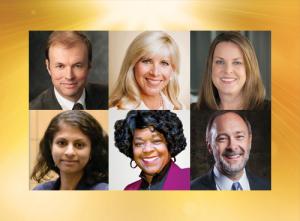Check out our special issue on our industry’s ESG Stories. (ESG standing for the Environmental, Social, Governance non-financial factors considered by investors.)

Fourteen utilities detail in the special issue what they’re doing in ESG (plus Moody’s Investors Service and Morgan Stanley weigh in):
AEP’s Sandy Nessing: “We are at an inflection point; we have a clean energy strategy on the table right now, and if regulators are supportive, by 2030 our generating portfolio will flip to fifty-two percent renewable energy.”
Arizona Public Service’s Ann Becker: “Our coal plants have been the primary economic engine and the way of life in these rural communities for more than fifty years… We’ve offered to provide a total of one hundred forty-four million dollars in transition support to the Navajo Nation, the Hopi Nation, and the areas around our Cholla Power Plant in northeastern Arizona… We are also going to help get electricity to more people on the Nation…”
CPS Energy’s Paula Gold-Williams: “Our biggest challenge now is to keep people open… We need to get back to the art of conversation, the art of collaboration, being open, being willing to say, maybe I didn’t think about it that way, but I can see your point, and then being additive.”
Evergy’s Ellen Fairchild: “Over the next ten years, we plan to add four thousand megawatts of renewables, between solar and wind, and we’re going to retire two thousand megawatts of coal. We’re taking advantage of our service territory to transition from primarily a coal-based utility to a renewable company.”
Eversource’s Catherine Finneran: “Our CEO this year announced the creation of a new vice president level position, an officer level position focused on environmental justice and equity that looks across our organization and institutionalizes EJ and equity in all areas… ensuring the benefits of this climate and clean energy work are shared by all populations.”
NiSource’s Pablo Vegas: “It comes down to the energy system is a complex system. You have to factor in not only what you need on a beautiful day, but on the hottest days in the summer, the coldest days in the winter.”
NW Natural’s Kim Heiting: “The next step is to evolve what’s going through our pipe… We’re looking at renewable natural gas sourced from landfills, wastewater treatment plants, farms, and other feedstocks. Beyond RNG, we’re considering ways to incorporate hydrogen produced from excess wind and solar or hydro as a way of capturing renewable resources from the electric grid that would have otherwise been lost.”
PPL’s Stephanie Raymond: “We want people to show up and do their best every single day, be heard, and have a voice. What we’re seeing now is a breakthrough around innovation because of our efforts to foster a more diverse and inclusive workforce.”
Sempra Energy’s Lisa Alexander: “Some of these goals include delivering sixty percent renewable or zero-carbon energy to California electric consumers by 2030 at SDG&E and delivering twenty percent RNG to core customers by 2030 at SoCalGas.”
Tri-State G&T’s Duane Highley: “The board said, get greener, reduce rates, take care of our communities. That’s not easy to do. But we’re getting energy now at a lower cost than any fossil fuel we could burn… We’re going to be fifty percent non-emitting across our four-state footprint by 2024. By the end of the decade, we’ll be seventy percent non-emitting.”
WEC Energy Group’s Beth Straka: “For the ambitious carbon reduction goals — a sixty percent reduction in carbon emissions from electric generation in 2025 and an eighty percent reduction by the end of 2030, off a 2005 base – we have a roadmap to achieve these goals, without the need for any major technological developments.”
Xcel Energy’s Frank Prager: “For our employees, the issue of racial justice and reconciliation was huge. The murder of George Floyd in Minneapolis occurred a few miles from our office, and our employees, especially our employees of color, were deeply affected.”


